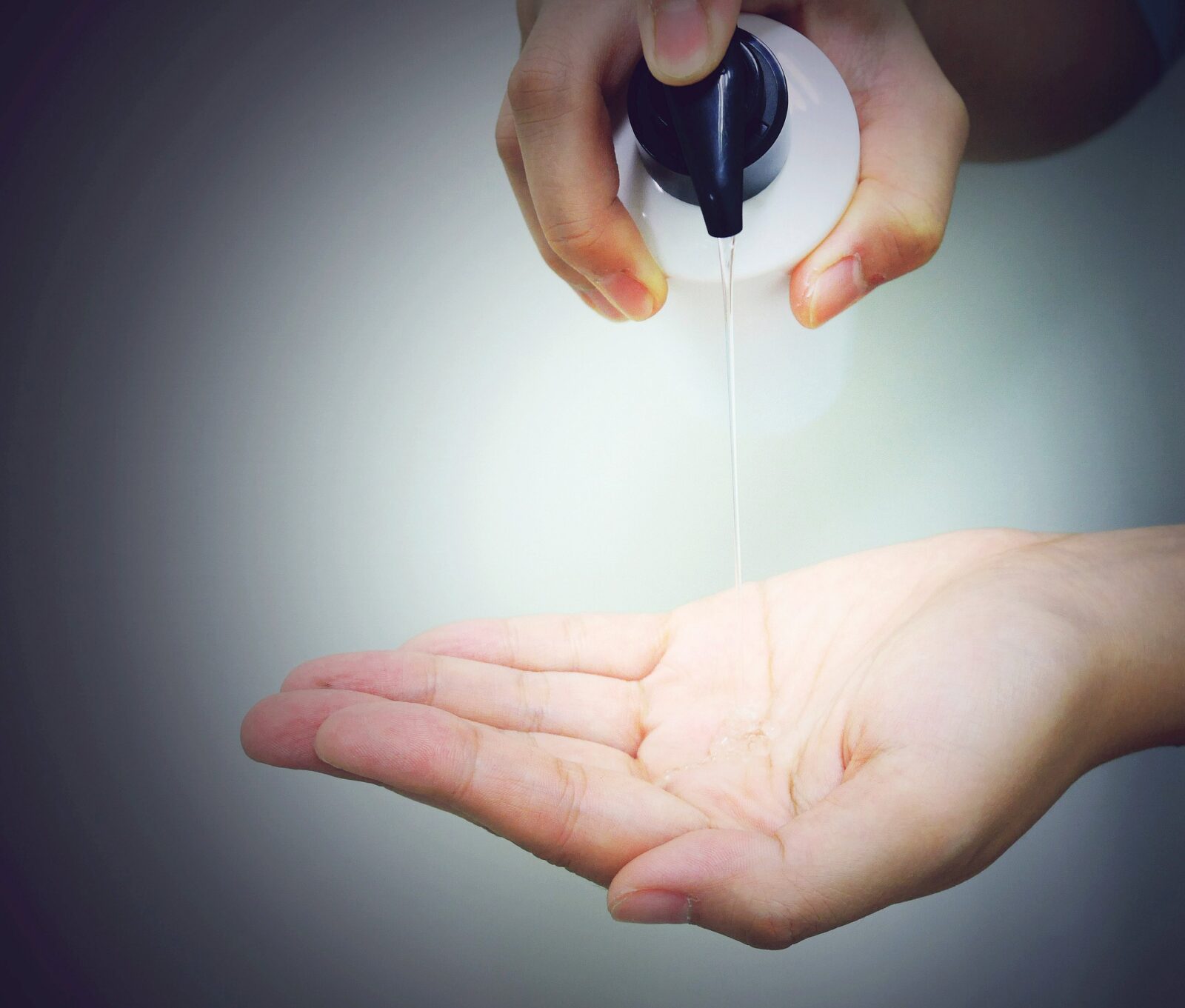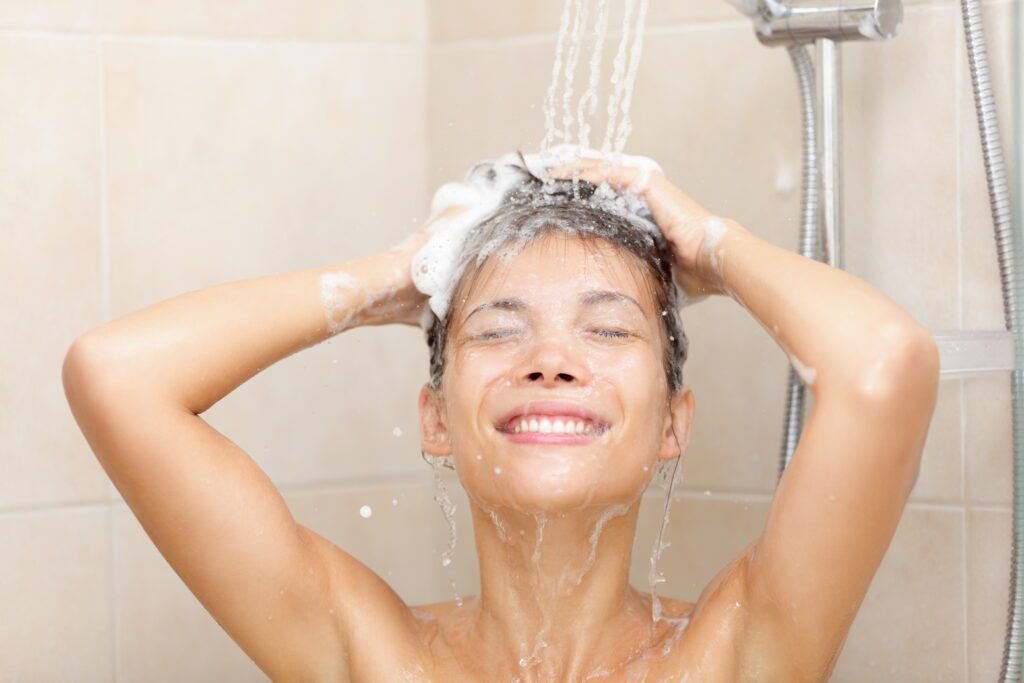
What does it mean to “clarify” your hair? Clarifying is simply removing product residue from the hair and scalp. This residue builds up over time and acts as a barrier on the hair and blocks moisture from getting in (i.e., water).
Any product you use can lead to build-up, even CG-approved ones. Vegetable oils, butters, and even minerals from hard water, to name a few, can lead to buildup.
Here Are Some Signs It Is Time To Clarify:
- Your hair looks dull, frizzy, stringy, or dirty when it is clean
- Your scalp is itchy, flaky, or irritated
- Your curls fall flat
Why It Is Important to Clarify Your Hair:
- To remove hard water minerals and chlorine
- To remove water-insoluble silicones
- To remove other gunk and residue especially if you only co-wash but use oils and butters on your hair
- To cleanse the scalp and remove dead skin cells
- To make sure color and other treatments “take” well
- To get the most benefit of a reconstructive protein treatment
- To revive limp hair and get more voluminous curls
How Often Should You Clarify?
Clarifying regularly, about once or twice a month, is typically sufficient. If you do not use a lot of product, and wash your hair with purified or softened water, you may be able to clarify less frequently, about every 6-8 weeks. Pay attention to what your hair tells you. If your hair is consistently not behaving well on wash day or is showing one of the signs from the list above, it is probably time to clarify!
Types of build-up include:
- Natural build-up from sweat, sebum, and natural oils
- Product build-up from creams, gels, mousses, and oils
- Mineral build-up from hard water or chlorine
- Polyquat build-up – found in many products
- Protein build-up from products and treatments
- Silicone build-up from products, treatments, shampoos, and conditioners
What Shampoo Should You Use?
To properly clarify your hair and scalp you need to use a shampoo with sulfate or olefin sulfonate. These ingredients will remove silicones, dirt, sweat, oils, and air pollution from the hair. Sulfates are not CG approved as they can be harsh and damaging to curly hair. But olefin sulfonate is a good alternative. This ingredient can also be drying to some hair so after clarifying, it is a good idea to do a deep conditioning and/or hydrating treatment. A treatment will restore moisture and natural oils that the clarifying shampoo has stripped.
Other CG approved clarifying ingredients that remove some product or oil build-up (but not as well as olefin sulfonate) include: Apple Cider Vinegar, Eucalyptus, Lemongrass, and Tea Tree Oil.

Your hair may also have build-up from hard water. You know you have hard water if white spots remain on your shower glass door, inside your dishwasher, or if you use water from a well. To remove hard water minerals and chlorine you need to make sure your clarifying shampoo also has a chelating agent. Chelators bind to metal ions in water rendering them inactive.
Which Chelating Ingredients Remove Hard Water Build-up?
Chelating agents typically fall into three main groups:
- Amino Carboxylic acids
- EDTA (ethylene diamine tetra acetic acid)
- NTA (nitrilo tri acetic acid)
- DTPA (diethylene triamine penta acetic acid)
- Hydroxy amino carboxylic acids
- HEDTA (hydroxy ethylene diamine triacetic acid)
- DEG (dihydroxy ethyl glycine)
- Hydroxy carboxylic acids
- Gluconic acid
- Tartaric acid
- Citric acid
- Oxalic acid
- Phytic acid
- Derivatives
- Sodium gluconate
- Sodium phytate
- Other
- Pentasodium pentetate
What Shampoos Are Good for Hard Water?
Hard water shampoos typically contain both a clarifying agent, such as sodium C14-16 olefin sulfonate, and a chelating agent, such as disodium EDTA. See also this article on Hard Water.

Here are a few curly girl community favorites:
Ingredients:
Water, Sodium C14-16 Olefin Sulfonate, Cocamide Dipa, Sodium Chloride, Butylene Glycol, Cocamidopropyl Betaine, Glycerin, Phenoxyethanol, Disodium Laureth Sulfosuccinate, Disodium EDTA, Fragrance, Sodium Lauryl Sulfoacetate, Sodium Gluconate, Peg-120 Methyl Glucose Dioleate, Potassium Sorbate, Panthenol, Citric Acid, Polyquaternium-10, Glucose, Linum Usitatissimum (Linseed) Seed Extract, Benzoic Acid, Ascorbic Acid, Blue 1, Hexyl Cinnamal, Limonene, Linalool
Ingredients:
Water/Aqua/Eau, Sodium C14-16 Olefin Sulfonate, Cocamide DIPA, Disodium Laureth Sulfosuccinate, Butylene Glycol, Glycerin, Cocamidopropyl Betaine, PEG-120 Methyl Glucose Dioleate, Disodium EDTA, Sodium Lauryl Sulfoacetate, Panthenol, Hydrolyzed Rice Protein, PEG-16 Macadamia Glycerides, Polyquaternium 10, Linum Usitatissimum Seed Extract, Sodium Gluconate, Glucose, Citric Acid, Phenoxyethanol, Potassium Sorbate, Fragrance/Parfum, Limonene, Benzyl Benzoate, Linalool
Ingredients
Water (Aqua), Sodium C14-16 Olefin Sulfonate, Cocamidopropyl Betaine, PEG-120 Methyl Glucose Dioleate, PPG-2 Hydroxyethyl Coco/Isostearamide, Tocopheryl Acetate (Vitamin E), Panthenol, Polyquaternium-10, PEG-6 Caprylic/Capric Glycerides, PEG-150 Pentaerythrityl Tetrastearate, Sodium Chloride, Citric Acid, Butylene Glycol, Tetrasodium EDTA, Diazolidinyl Urea, Iodopropynyl Butylcarbamate, Fragrance (Parfum), Yellow 6 (CI 15985)
Find Clarifying Shampoos with Olefin Sulfonate on curlplanet.com or head over to SHOP to get your copy of the Ultimate Guide to Non-Sulfate Clarifying Shampoos.
Scientific Resources We Find Useful:
- Detergents: A review of the nature, chemistry, and behavior in the aquatic environment. Part I. Chemical composition and analytical techniques. Aboul‐Kassim, Tarek A., and Bernd RT Simoneit. Critical Reviews in Environmental Science and Technology 23.4 (1993): 325-376.
- Chemical formulation: an overview of surfactant based chemical preparations used in everyday life. Hargreaves, Anthony E. (2007).
- Shampoos, conditioners, and camouflage techniques. Draelos, Zoe Diana. Dermatologic clinics 31.1 (2013): 173-178.
- Chapter 25: Hair Cosmetics. Draelos, Zoe Diana, ed. Cosmetic dermatology: products and procedures. John Wiley & Sons, 2015.
- Dissolution of Soap Scum by Surfactant. Part II: Effects of NaCl and Added Chelant on Equilibrium Solubility and Dissolution Rate of Calcium Soap Scum in Amphoteric Surfactant Solutions. Itsadanont, Sawwalak, et al. Journal of Surfactants and Detergents 17.5 (2014): 859-864.
- Determination of sequestering agents in cosmetics and synthetic detergents by high-performance liquid chromatography with ultraviolet detection. Kemmei, Tomoko, et al. ” Journal of Chromatography A 1171.1-2 (2007): 63-68.
- Handbook for Cleaning/decontamination of Surfaces. Johansson, Ingegard, and Ponisseril Somasundaran, eds. Handbook for Cleaning/decontamination of Surfaces. Elsevier, 2007.
- Final report on the safety assessment of EDTA, calcium disodium EDTA, diammonium EDTA, dipotassium EDTA, disodium EDTA, TEA-EDTA, tetrasodium EDTA, tripotassium EDTA, trisodium EDTA, HEDTA, and trisodium HEDTA. Lanigan, R. S., and T. A. Yamarik. International journal of toxicology 21 (2002): 95-142.






